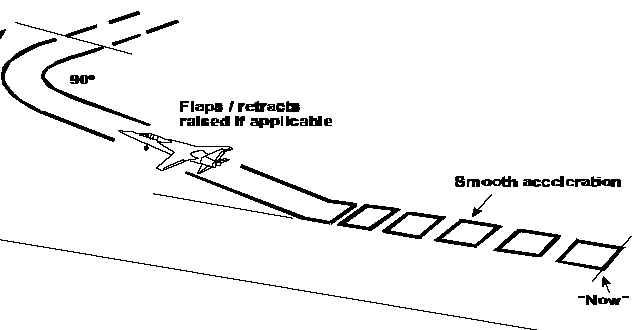|
The model aircraft should
stand still on the ground with the motor running without being held by the
pilot or mechanic and then take-off into wind, or as required by the
competitor to make best use of the take-off distance available (jet
subjects). If the model aircraft is touched after the competitor calls
"Now" the take-off will score zero. The take-off should be
straight and the model aircraft should smoothly accelerate to a realistic
speed, and then lift gently from the ground and climb at an angle
consistent with that of the prototype. The take-off is completed after the
model aircraft has turned 90 degrees. If the prototype used flaps for
take-off, then the model aircraft should also, but this may be subject to
the competitor's judgement taking into account the wind strength. Any
flapless take-off due to wind must be nominated to the judges before
take-off. Flaps should be raised during the climb -out after take-off. If
applicable, the landing gear should be retracted during the climb-out.
|
